















































Christmas opening hours:
Happy Fit Footwear Manuka:
Christmas Eve: 10am - 1pm
Christmas & Boxing Day: Closed
Friday 27th Dec: 10am - 5pm
Saturday 28th Dec: 10am - 4pm
Monday 30th Dec: 10am - 5pm
New Years Eve: 10am - 1pm
New Years Day: Closed












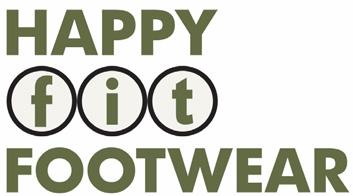



















































Christmas opening hours:
Happy Fit Footwear Manuka:
Christmas Eve: 10am - 1pm
Christmas & Boxing Day: Closed
Friday 27th Dec: 10am - 5pm
Saturday 28th Dec: 10am - 4pm
Monday 30th Dec: 10am - 5pm
New Years Eve: 10am - 1pm
New Years Day: Closed















By Elizabeth KOVACS

In a collaboration between two wellknown Canberra institutions, empty gin bottles are getting a new lease of artistic life.
Inspired by the clear blue of the Bombay Sap phire Gin bottles, local pub owner Peter Bar clay began to put aside the empties from King O’Malleys awaiting an idea.
When it came, he contacted Canberra Glass works’ production and commissions manager Jacqeline Knight with the thought that his collec tion of empty blue bottles might be repurposed.

Designer and glassblower Katie-Ann Houghton turned the bottles into vases, five of which are now hung in his Civic pub as a bespoke chandelier.
“It is a wonderful partnership and a beautiful story,” Peter says.
“We’re so lucky to create something that has a Canberra history.
“It’s not just recycling – it’s upcycling.”
Typically the bottles, along with other recycled glass, would find their way into granulated road base, but the team at the Kingston glassworks were quick to get to work, playing around with the donated bottles.
Initially, they found the glass lost its colour when melted down and decided it had to be moulded into something new if the signature blue colour was to be maintained.
After cutting the tops from the bottles, it was Katie-Ann’s idea to create a steel mould, something that could be used to melt the bottles into a new, octagonal shape for the vases.
This new method would result in the bottles being stretched from their four-point shape to eight neat points by blowing into the heated glass from a blow pipe. The original embossing on the front and base of the bottle is still visible on the vase.
“It honestly breaks my heart to see something so beautiful go to waste,” says Jacqueline.
“This is why we are here. We want to repurpose glass to make something that is beautiful, practical and bespoke.”
The tops of the bottles are reused for other projects around the facility.
Since 1993: Volume 30, Number: 51



General manager: Tracey Avery, tracey@citynews.com.au
Senior advertising account executive: David Cusack, 0435 380656
Advertising account executive: Damien Klemke, 0439 139001
Ian Meikle, editor@citynews.com.au
Journalist: Elizabeth Kovacs, elizabeth@citynews.com.au
Arts editor: Helen Musa, helen@citynews.com.au
Production manager: Janet Ewen
Distribution manager: Penny McCarroll
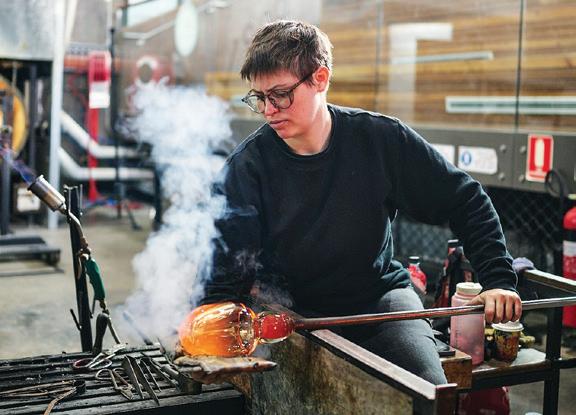
“Everything gets used,” says Jacqueline.
“There’s no waste.”
Katie-Ann has a team of five working with her on the project, with small batches of 30 to 40 vases made at a time.
“It’s a slow process,” says Jacqueline.
“The vases require hours between each stage to allow them to properly cool down.
“The end result is something that is entirely unique.”
The King O’Malleys x Canberra Glassworks sapphire vases limited edition collection continues to be a hit.
“Peter has been amazing at marketing for us,” says Jacqueline.
“It’s been a great collaboration between two
Canberra businesses.”
The vases can be bought at the Canberra Glassworks Shop.
“Handmade glass and glassblowing is an endangered skill,” says Jacqueline.
“It’s important that our artists’ hard work is recognised.”
Katie-Ann can often be found in the Hotshop, which has a viewing deck for visitors to watch the process live.
Her work has included reusing other bottles, including creating glasses and decanters from wine bottles.
Peter continues to collect and donate the Bombay Sapphire bottles, with all proceeds going towards the artists.
We are able to assist in negotiations and/or represent you in:
• Matrimonial Property settlements
• Parenting Arrangements for Children
• Divorce
• Binding Financial Agreements
• De Facto relationship breakdowns







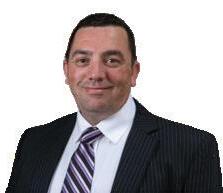
“It’s
been a year. One of those. And 2025 looks like the Godzilla in the room for many local and federal pollies.”
Here’s political columnist HUGHES’ take – locally and federally –on 2024 and ahead to 2025…
The top three politicians for 2024
1. Andrew Barr
2. Tom Emerson
3. Leanne Castley
Andrew Barr finishes 2024 as no.1 in the ACT Assembly. Why? Here’s why:
• No.1 primary vote in the most competitive electorate.
• No.1 primary vote in the no.1 party in the ACT.
• Chief minister, still.
• Saw off Chris Steel before the election, so rumour has it.
A high “Barr” you might say, one which may take years to see again. But the election result would worry Labor. They only won two out of five electorates on primary votes, overall just under 2000 votes ahead. That is by no means a sign for optimism or continuity. The Harris (US) and Miles (Queensland) examples demonstrate leadership change should leave enough time on the clock for the new leader to brand build. So maybe late
2025, mid 2026. I still think Cheyne for Labor in 2028.
2. Tom Emerson. Smarts. Energy. Early hiccups and town hall candidate shenanigans aside, the ex citement around the indies grew and grew. Emerson’s performance against the other leaders spoke volumes. His brand management since the election leaves some looking like eight-track tapes to his iPad. 2025 will be a challenge as the political winter hits.


3. Leanne Castley. Hanson a close 4. When Lee understandably went quiet during “Birdgate” much of the Liberal brand front fell to Castley and Parton. Both did a great job. Castley, on the northside, took a lot of heat from Labor, the indies, and the Greens. One cold night in Gungahlin up against them all was memorable. I think she’ll prove a few more wrong in 2025.
The issues shaping 2025 1. Health

needs to up their game. Modern pools, a new stadium, a new convention centre, better local facilities. The MyWay+ rollout/rollup is another example of poorly thought out implementation caused by little oversight from overworked ministers.
combative, anti-social politics. But effective for them.
The election issues?
When? March, likely after the WA election on March 8. Maybe March 1.
Labor will be building narrative around a few fronts, one being positive leadership who are building together. Another is the story being crafted around effectiveness and deliverables, hence the late rush to get legislation through.
has staged an impressive comeback. The Coalition might be the largest party in the House after the next election. Amazing. Add the slowburn strategy with outer suburban voters, tiring of Labor’s claim to be listening to them. A clever strategy on the narrative front means he’s been taking the easy hits on Labor, like migration, and going nano in size when the (nuclear) heat goes back on. Modern politics to a T. is critical for Labor’s fortunes. Not just because she has the PM’s back on the world stage, but domestically her popularity is worth 1-2 per cent nationally. Her mentoring of the next generations coming through has been critical for Labor. gets 3 because of how he’s been playing the wedge on Labor in inner-city electorates. Renters Party. Activists. Hard. Divisive. Very






They want to avoid a campaign after April as this would include the massive deficit budget of 2025. That would change everything to negative economic territory where Dutton is waiting.
The Coalition will be going hard on a message of a soft, weak Labor that is dividing the nation by allowing minority left elements to influence policy and agenda. Fear and fight will be the central narrative themes, assisted by the strong and decisive leadership style of Dutton, now two years into the build.
Finally
Thank yous: To you. The kind and respectful readers of my columns. To all politicians who stood this year. To those who do so from the right place. To the editor and this publication. And finally, to my kids. To all, a safe and enjoyable break and see you in the ’25.











“The irony of the Help to Buy initiative is that of a market failure being addressed by a market-based solution, rather than reform of the market.” JON STANHOPE & KHALID AHMED shred the logic of Labor’s signature housing plan.
“A problem well stated is a problem half solved.” The approach to problem solving reflected in this statement, attributed to the prolific inventor Charles Kettering, not only makes finding a solution to a problem that much easier, it also saves us from chasing pointless or even counterproductive solutions.
We were reminded of this truism when reading the explanatory statement to the exposure draft of the federal government’s Help to Buy Program. This and the Build to Rent Program are the signature policies of the federal Labor government for addressing housing affordability, or more accurately, its decline.
Since the policy was announced and the implementing legislation introduced, the policies have been heavily contested. Notably, the Greens have been in a stand-off with the government for more than a year, and only agreed to “waive” the bills through as the parliament was preparing to rise.
The Greens extracted from the government a promise for a $500 million injection of funding for public housing upgrades (a paltry $1740 per dwelling) and so avoided the embarrassment of

having to vote with Peter Dutton.
For the government, the passage of this legislation before an impending election is politically convenient. The delay has allowed the government to take the moral high ground with Housing Minister Clare O’Neil denouncing the Greens for dragging out the twin housing bills while “real people get harmed by their politicking”.
As for the policies, which have been promulgated as market-based solutions to a housing affordability crisis, there appears to have been little, if any, public discussion of their merit.
While there have been some muffled voices raising concerns about the effectiveness of the policies, the mainstream media has been largely preoccupied with the circus of conflict which was generated and the unquestioning reportage of slogans as justification, or otherwise, of the initiatives.
However, we note in relation to the Help to Buy initiative, the irony of a market failure being purportedly addressed by a market-based solution, rather than, say, reform of the market or a non-market solution.
Essentially, what is proposed is a sharedequity scheme under which an investor (the government) takes part ownership of an asset (a dwelling).

of the program over the long term and in a myriad of changing circumstances is certain to create heartache and serious grievances.
Besides the design challenges, a more fundamental problem is that the “solution” has no direct connection to or is oblivious to the cause of the problem, and is akin to a symptomatic treatment that has the potential
The explanatory statement to the legislation (Page 1) identifies the problem as: “The key barriers to home ownership are saving for a deposit and servicing a loan.
“It has been increasingly difficult for homebuyers to save for a deposit and, coupled with the increased costs of servicing mortgages, this has made accessing home ownership increasingly challenging for low- and middle-
Really? Over more than a decade, dwelling prices have increased at a rate of two to three times that of disposable incomes.
The upfront cost of purchase for the buyer (which is a minimum of 10 per cent of the price) is reduced to 2 per cent. The interest and loan repayments are similarly reduced because of the smaller amount of the loan.
Over time, assuming their financial capacity improves, the household can purchase the equity from the government in minimum amounts of 5 per cent. The scheme is targeted at median to sub-median income households and involves an eligibility assessment. It is being sold as an innovative solution to the home ownership or affordability crisis.
However, we fear that the scheme will likely have information blackholes for participants, an overarching bureaucracy, potentially mismatched expectations and asymmetric powers between the equity partners.
While it may be a useful path for public housing tenants’ transition into ownership, we are concerned it is not suited to the open market with a government as a partner.
Housing is a long-term investment spanning multiple phases of life, and households entering the market have differing circumstances and expectations. Over time, their lives may take different trajectories. What happens, for example, if a household’s income increases beyond the eligibility limit, but their circumstances do not allow full purchase of equity from the government?
Having only a part share of the property, the household is to be responsible for the full ownership costs, but will be required to share the increase in value with the government.
If the value of the property decreases, that may be a different matter. The legislation dictates, for example, that the government’s share of equity would be increased to preserve the monetary value of its interest, if a decrease in the value of the house is due to a reckless act or negligence. Who is to decide if the household has been reckless or negligent? What are the consequences of a DIY project going wrong or not being to the liking of the equity partner (the Commonwealth Government)?
We have previously written about the executive overreach and arbitrary exercise of powers by public officials, with good intentions, even legal, but indefensible ethically, resulting in misery and lasting damage for people, for example, the Robo Debt scheme or the forced eviction of vulnerable tenants under the ACT’s infamous Public Housing Renewal Program.
The Help to Buy legislation seeks to preserve, quite reasonably, the public investment in the dwellings being purchased. However, the discretion available to the administrators
Capital gains on average have matched those of riskier investments in the financial markets – blatantly unjustified given the low risk, but of course most welcome for existing owners but an ever-increasing barrier for those trying to enter the market.
While income growth has been subdued, it’s the growth in dwelling prices that has been the key barrier to home ownership.
Independent economists have long observed that the principal solution to housing unaffordability in Canberra and across Australia is to increase land releases to maintain a balance between demand and supply.
The shared equity scheme is almost certain to advance purchasing decisions for those who can service the loan but do not yet have the requisite savings for a deposit, and similarly for those who cannot fully service a loan. In other words, it will stimulate demand even though the supply systems have consistently failed to meet existing demand.
However, any significant uptake of the scheme (a supposed measure of its success) is almost certain to heat the market and increase prices even further.
While that would deliver good returns on any equity investment by the government, it would be very bad news for prospective homebuyers, which conjures up the adage that a brilliant solution to the wrong problem can be worse than no solution at all.
Governments across Australia have failed to address yet alone solve the underlying problem – ie, land supply. We acknowledge there are difficulties given the low risk-high growth norm of the housing market and the vested interests in drip-feeding the supply of land to keep prices high.
Unfortunately, even where planning systems have provided adequate approvals, the industry has banked the approvals and drip-fed the market.
However, in the ACT, unlike anywhere else in Australia, the government has full control of the planning and land supply system.
Under Andrew Barr’s leadership it has, nevertheless, delivered house price increases averaging 6 per cent annually. It is the monopoly supplier and a speculator in the market. Public housing and community housing are the well-established means to address affordability for people for whom the market fails. We have previously highlighted the appalling record of the ACT government in these areas, with the sale of more than a thousand units of public and social housing to fund the tram project. It has in addition emasculated the community housing sector.




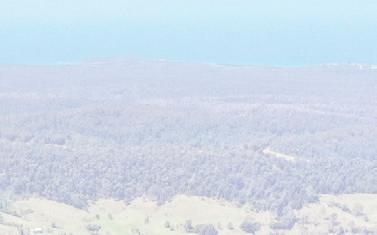









Canberra is the second most liveable city in the world according to the Oxford Economics Global Cities assessment.
Meanwhile, Melbourne has been relegated to way down the list behind Sydney, Adelaide and Brisbane. The national capital is only second to the French city of Grenoble.
Regrettably, for those of us who live here, there are too many things that do not match up to that assessment.
The full Oxford analysis also includes four other categories. In this case Canberra ranks 44th in the world. The other assessment areas include economics, human capital, environment and governance. It is no surprise that these other four issues dragged Canberra down. Environment, human capital and economics need an improved focus if Canberra is to lift beyond 44.
Flying into the nation’s capital I have always felt a surge of pride. Flying into other cities generally reveals a view of houses with a few trees. Flying into Canberra, apart from newly developed suburbs, reveals largely the tree canopy with houses in between.
The greening of Canberra started with Charles Weston who was responsible for introducing around 1.2 million trees to Canberra between 1921 and 1924. His legacy continued over the

On a freezing cold night, the mother and baby, along with a number of other mothers and babies, were left in a triage queue that snaked all the way to outside the door of the ED building.
More importantly, increases in the number of hospital buildings require more staff. The Emergency Departments (ED) of hospitals is the first port of call for many in our community in need of health care. EDs, in particular, must be staffed to deal with the needs of the incoming patients.
There are many examples of good care, but unfortunately there seem to be many more where simple changes in staffing procedures would improve patients’ experiences. I heard recently from a young mother, whose baby was having difficulty breathing and who was advised at the nurse-led clinic to urgently attend the ED at The Canberra Hospital.
member had to apply an epi-pen to a woman who was in dire straits while waiting to be triaged.
Once triaged, the mother spoke highly of the emergency staff and the care and attention they paid to her baby. The quality of our hospital staff is not what is in question. Having enough staff is fundamental to having Canberra’s hospitals match other hospitals around Australia.
As Jon Stanhope and Khalid Ahmed explained in CityNews recently, “the ACT stands out like a sore thumb with the lowest annual growth in health expenditure at a mere 0.1 per cent”. Hopeless financial management!
century that followed. Unfortunately, in the last couple of decades there has not been a great commitment to either replacing dead trees or increasing the number of trees across the city.
Add the problem of increases in high density living without the surrounding trees and Canberra’s environment and liveability deteriorates.
Canberra City News Half Page Horizontal - 145mm H x260mm W.pdf 1 13/11/2024 2:47:16 pm
Within the human capital element, the deterioration of our hospital systems will surely lower our ranking. Just over a year ago the government moved to resolve its problems by taking over the management of the northside hospital from Calvary Healthcare. Has that really resolved the problems? Not so far.
The takeover has been followed by a run of announcements about new hospital buildings. Are new hospital buildings the answer to our hospital challenges? Hardly! The low standing of Canberra hospitals on a national comparison will not be solved by making announcements of big spending well into the future. And long after the upcoming election.
The announcement by Health Minister Rachel Stephen-Smith of a billion-dollar investment in a Northside Hospital building seems, on the surface, to be a sensible long-term investment strategy. A close examination identifies “call for expressions of interest”.
On a freezing cold night, the mother and baby, along with a number of other mothers and babies, were left in a triage queue that snaked all the way to outside the door of the ED building. No-one came out to see if there were more urgent cases or ill babies in the line.
To rub salt into the wound, once inside, there was a video explaining how the government had been investing to ensure better patient outcomes. Another person mentioned that only a few weeks earlier a non-hospital staff
Better economic and environmental management, and taking care of our human capital, is required if the ACT is to lift from 44th overall and to avoid being downgraded by Oxford Economics Global Cities assessment.
Michael Moore is a former member of the ACT Legisla tive Assembly and an independent minister for health.




— Thor Diesendorf (Founder & Director of Thor's Hammer)

The rabbits are back… if they ever really left.
When Charles Weston began the task in 1913 of providing Canberra with the green mantle that adorns our capital city and surrounds today, the Limestone Plains were overwhelmed by millions of them.
They were the progeny of 13 European wild rabbits imported by Thomas Austin, a British squatter in Victoria’s Winchelsea, for his sporting pleasure. By 1880 they had crossed the NSW border and multi plied exponentially.
One of Weston’s first hirings was 27-year-old James Carrington Brackenreg, an experienced rabbiter from Narrabri. He had developed a rabbit-proof fence and under Weston’s supervision he and his team sealed off 40-acre sections between Queanbeyan and the early Canberra settlement, then eliminated the voracious hordes separately in each one.

It was an extraordinary effort, using explosives to blow up their warrens, poison and guns to kill off the escapees, and finally dogs to clean up the survivors.
It was the first time that white Australians chose to assert their status as the apex predator by eliminating a wild animal. And given its non-indigenous background no one objects, either ethically or logically.
However, when the government of the national capital chooses to “cull” thousands of kangaroos annually, by shooting them dead, day or night –while at the same time asserting that certain killer birds are “protected” by its laws – a very different response is engendered.
First, I would argue that the capital’s administration has a duty to set an example to the rest of the country. It is, after all, the home of the prime minister and the governor-general,
the repository of our historic legacy and our symbols of nationhood. Admittedly, the quality of our First Ministers since the Hawke government imposed self-government upon us has rarely thrown up a personage worthy of the role – Jon Stanhope for one and I’d include Kate Carnell, until she imploded the hospital. But the very idea of its administrators ordering the slaughter of one of the unique creatures that grace our coat of arms is absurd and obscene.

Why, I ask you, is the currawong and crow protected by law when the decorative and charming species are crying out for protection from them?
Indeed, it is doubly so when you consider that kangaroos have an in-built capacity to reduce their own breeding rate during times of sparsity. And if they represent a danger to themselves or our cars, they could be gradually moved to areas such as Namadgi National Park by the creative use of fire and fencing.
Birds raise different issues. Our native parrots and the tiny wrens and finches have been terrorised for decades by the myna birds as well as the currawongs and crows (ravens, if you will), which have invaded our city in the years following the big bushfire. They don’t call the gathering a “murder” of crows without reason.
We are not alone, I’m sure, in witnessing the unequal battle for existence that has practically eliminated the gorgeously clad genus
Psittaciformes and the sweet little wrens and finches of yesteryear. They build their tiny nests and seek to raise their babies, before the imposing mynas and the black horrors descend upon them. The result is an outrage of violent death and bloodied feathers in the birdbath.
Why, I ask you, is the currawong and crow protected by law when the decorative and charming species are crying out for protection from them?
Charles Weston and JC Brackenreg fought the good fight against the invading rabbit during the Great War of 1914-18. Just over a century on, the invader has reappeared, this time with an aerial combat arm no less destructive than the four-footed armies already in possession of the high ground of City Hill.
Time, I suggest, to rally to the flag once more.
robert@robertmacklin.com





Shop 1/19-27 Trenerry St, Weston (02) 6189 8979
GREENWAY 15 Limburg Way, Greenway (02) 6109 8247






GUNGAHLIN
Shop 3/46 Hibberson Street, Gungahlin (02) 6112 8024
A study of economics usually reveals that the best time to buy anything was last year. – Marty
Allen
In the grand theatre of economic predictions, economists often don the cape of omniscience, but despite their impressive mathematical models and graphs, they are clearly mere mortals with a talent for getting things wrong.
It used to be said at ANU that the economics lecturers didn’t need to change the economics exam questions, only the answers.
Remember the global financial crisis of 2007-2009? It was among the five worst financial crises the world has experienced and led to a loss of more than $US2 trillion from the global economy.
It was the most severe worldwide economic crisis since the Great Depression. Factors that caused it were predatory lending, excessive risk-taking by global financial institutions, a build-up of toxic assets within banks and the bursting of the US housing bubble.
Well, most economists didn’t see it coming. In the lead-up to the collapse, they were busy heralding an era of prosperity. Housing prices were supposed to keep going up,
banks were deemed invincible and the phrase “too big to fail” was thrown around like confetti.
Yet, when the bubble burst, economists were left scratching their heads, wondering how their intricate models had failed to predict the impending economic Armageddon.
Then there was covid – again unexpected. The most common unforeseen economic impacts were increased internet shopping, a rise in home-based professional work and a decline in the need for commercial real estate.
Cryptocurrencies have provided yet another forum for economic misadventures. As Bitcoin soared to unimaginable heights, economists were left scratching their heads. One moment, they were dismissing cryptocurrencies as a passing fad; the next they were trying to wrap their minds around decentralised finance and blockchain technology.
The rise of generative AI and predictive AI are a newer example of economists being left in catch-up mode.
The next time economists confidently predict the future, we should recognise that, in the complex interplay of markets, human behaviour, and unforeseen events, there’s every

Some financial advice from
chance of them getting it wrong.
Predicting the next smart financial move is probably as challenging for the average punter as finding a kangaroo in Canberra.
On a personal note, every time I’ve taken professional economic or financial advice, I’ve lost money. I’ve found the safest bet – for me at least –is to do my own research, then make my own financial decisions (this advice is general – consider if this

Predicting the next smart financial move is probably as challenging for the average punter as finding a kangaroo in Canberra.
advice is appropriate for you before acting on it!).
Anyway, on a lighter note, here is some sage economic advice:
• The quickest way to make a million? Marry it. – Zsa Zsa Gabor
• If you see a bandwagon (to jump on) it’s too late. – James Goldsmith
• The quickest way to make a million is to start your own religion. –
L Ron Hubbard
• No one ever went broke underestimating the taste of the American public. – HL Mencken
• The only function of economic forecasting is to make astrology look respectable.– JK Galbraith
• My dog is worried about the economy because his dog food is up to 99 cents a can. That’s almost $7
in dog money. – Joe Weinstein
• The quickest way to make a million in musical theatre is to start with two million. – Andrew Lloyd Webber
• Gentlemen prefer bonds. –Andrew Mellon
• I think it’s wrong that only one company makes the game Monopoly. – Steven Wright
• There are two times in a man’s life when he should not speculate: when he can’t afford it and when he can. – Mark Twain
• Elbert Gary [the reclusive CEO] of the United Steel Company never saw a blast furnace until after he was dead. – Benjamin Stolberg
• There are three ways of losing money: racing is the quickest, women the most pleasant and farming the most certain. – Lord Amherst
Clive Williams is a Canberra columnist.





In the early ‘70s we’d get a sermon every week – I loved the storytelling.
Some of them I hated, especially the ones with brimstone. Whatever it was, it sounded awful.
My favourite was when the wealthy dudes dressed in rich brocade (again, no idea what it was but sounded schmick) would donate heaps to the church and smugly gave each other plaudits and shared Pontius Pilate’s mobile number, then criticised a poor, old woman who gave so little, just copper coins.
Jesus, rather bravely, had a go at them, and said that what this woman was donating, represented a far greater pain to her, a much greater percentage of her meagre possessions, that what brocade-face had given.
I think of that story often, remembering sitting uncomfortably next to dad in his only suit in church, rumbling in his pockets for nonexistent change.
Later on he got a bit Bolshie about attendance, and would only go to mass if he knew I would be playing Amazing Grace and/or How Great Thou Art on the organ during the service. These tunes would make the 200-metre trip to St Patrick’s more worthy of his time than this week’s episodes of Countdown and the footy replay.
When I arked up and said: “Not

“Jesus said what this woman was donating, represented a much greater percentage of her meagre possessions, that what brocade-face had given.”
Image: AI generated by CharlVera
again, the punters are typecasting me musically”, mum would plead that dad might burn in Eternal Damnation just because I wanted to play some racy cool tunes, and my meticulous post-communion rendition of that modernist The Lord Is My Shepherd would be followed directly by a bolt of lightning above our house while dad was enjoying Abba and copping brimstone sandwiches (whatever they were) for infinity.
But, like the idiot I’ve been all my life, it took me decades to connect the dots. My friends Damien, Jeev, Andrew, Walter, Iain, Tim, Chandi
I try to do stuff for my communities because I’m still trying so hard to impress mum and dad, and just because they’ve been gone 15 years now I cannot be sure they’re not watching me from the sky somewhere.
and many others wander around the lake every week solving the world’s problems (struggling just now) and I marvel at them.
They give of their time, their energy, their passion, for so many causes and concerns. Whenever my brain’s lifelong chronic shortage of Ritalin leads to a new-fangled project or requires workhorses for an old one, they are there.
I can always rely on them. Jeev, I need you to mentor yet another young person. Tim, can you see the eardrum of every kid in Canberra on your only free weekend this year. Walter,
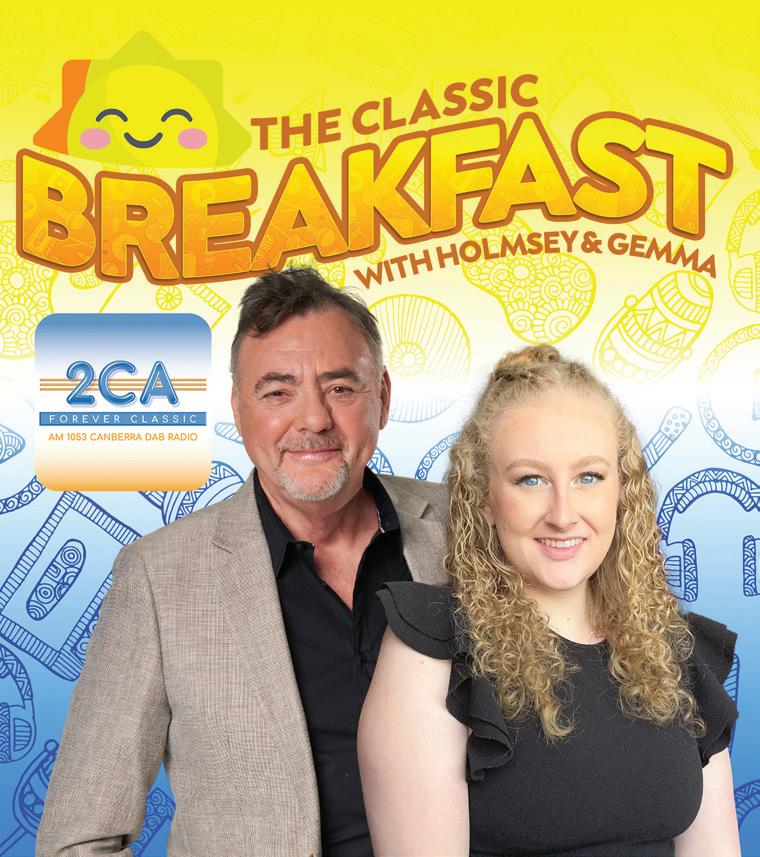
can you hold the world on your shoulders for a month while I do important stuff like lay in this lonely-looking hammock. No doubt your buddies are the same.
Notice anything about these guys? Aside from wearing faces that only a mother could love and the kind of unfortunate personal odour that evokes memories of brimstone (kindness prevents me talking teeth here) – they are all men, all of a certain age, of a certain socioeconomic bracket, of a certain postcode.
My mate Kerrie is the most generous person, and although she ain’t Karl Marx, she understands so well “to everyone what they need, from everyone what they can give”. Not so much as the basis for an extraordinary revolution and the odd pogrom, but because the very nature of volunteering, charity and giving to community is predicated on a person’s ability to do so. I try to do stuff for my communities because I’m still trying so hard to impress mum and dad, and just because they’ve been gone 15 years
now I cannot be sure they’re not watching me from the sky somewhere during the commercial breaks on Permanent John Wayne and Other Lesser Cowboys TV (assuming dad’s in Heaven).
It took me too many years to realise that young people, people struggling and juggling mortgages and families and health and work and so many other challenges – for them to even turn up to a meeting to contribute their view, often in a shy and quiet way, maybe on Zoom while doing chores – had given more than I had, that day or ever.
Kindness comes from understanding and, maybe 20 years late, I’ve figured out that some of the greatest contributions to our community come not from entitled big, old, white men like me, but from the gifts of a couple of hours here and there, from those who do not have a minute to spare, but give anyway.
Antonio Di Dio is a local GP, medical leader and nerd. There is more of his Kindness on citynews.com.au





In his column (CN December 5) Andrew Hughes writes that Elizabeth Lee MLA, who lost the Liberal leadership, can now “take it easy” with her “feet up” and more “family time”.
Is that what it is like to be a backbencher in the ACT Legislative Assembly? An easy job with the feet up on the desk and home early to be with family?
Ms Lee is also the Member for Kurrajong and is there to represent the constituents of that electorate, while earning an annual salary of more than $188,000.
Dr Hughes should have chosen his words more carefully as it gives the impression that our elected representatives in “backbencher” positions are in a job that’s very easy and pleasant, requiring little or no effort.
Tony Falla, Ngunnawal
It’s population that’s the energy problem
Peter Tait (letters, CN December 12) wrote that rather than arguing about nuclear power versus renewable energy, we should “significantly reduce our materials and energy use, so we can live within planetary limits”. He is partly right.
In their GenCost final report for 2023–2024, the CSIRO and the Australian Energy Market Operator demonstrated clearly that nuclear power is far too costly

and would be realised far too late to have the slightest effect on Australia’s emissions.
The draft GenCost 2024–2025 report is apparently even more conclusive.
Energy demand must be met much more from renewable sources, and much less from fossil fuels such as coal and gas.
However, the elephant in the room is population. All conceivable (pun intended) steps should be taken to aim for the reduction, of Australia’s, and eventually the world’s, population. Only then will we have a reasonable chance to slow – or halt – the progress of global heating.
Dr Douglas Mackenzie, Deakin
I have read a number of articles about young detainees at Bimberi being denied hugs from their family members.
While I am aghast at this, I am particularly gobsmacked at some of the comments I have read by members of our community; a complete lack of empathy and understanding of young people embroiled in the criminal justice system.
As a previous probation and parole officer, I was later employed as a senior case worker at Child and Youth Protection
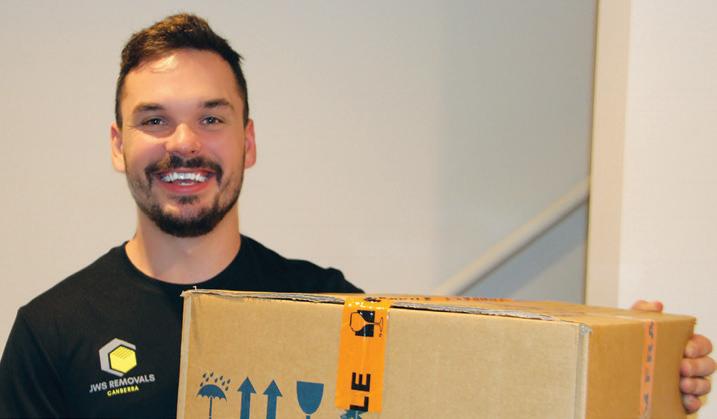


Services. I became familiar with many children of my previous clients at ACT Community Corrections.
It is time for people in our community to drop their judgemental and stigmatising attitudes towards children and young people who often are left with very little hope of avoiding the “system”. Simply, you do not know their stories and the pain they may have endured in their short lives.
Janine Haskins. community advocate, ACT Justice Advocacy Group
As a hardened social worker/small-business woman, I have seen horrors that come with both jobs. Now seeing the gorgeous almost tame kangas killed across Canberra and feeling helpless, and the rise in homelessness and disconnectedness in society, l read columnist Antonio DiDio’s beautiful narrative. (“Some dumb rules don’t apply at Christmas”, CN December 12).
His eloquent story ends with hope. Hope that kindness can win, that human kindness can supersede rules that bind.
Thank you, Antonio.
Gillian Jewell, via email
The Netanyahu government has under-
mined the respect for Israel and made the world less safe for Jewish people.
Its disproportionate response to the Hamas butchery has resulted in the deaths of 45,000 people, predominantly civilians, in Gaza. Clearly it has not carefully targeted Hamas fighters.
Israel, thanks to the actions of the Netanyahu government, has lost much of its support emanating from the Holocaust. The decline is reflected in the recent UN vote of 157 countries in support of a resolution recognising Palestinians’ “permanent sovereignty” over resources in the occupied Palestinian territories in Gaza and the West Bank.
To avoid becoming viewed as a pariah state, for any hope of more peaceful relations with Palestinians and its Arab neighbours and to quell rising antiSemitism, it needs to stop its disregard of the rights of Palestinians.
Mike Quirk, Garran
So some person or people set fire to a Jewish place of worship in Melbourne and it’s classified as an act of terrorism even though no-one died.
And the state of Israel killed more than 40,000 innocent women and children in Gaza in just over a year and they say it’s not genocide. That’s weird, hey?
Keir Hall, Florey
It’s that time of year when interstate visitors are at risk of collecting an unwanted souvenir of Canberra: a fine for exceeding 40km/h in Civic.
As driving in Canberra is different, here are a few tips to help visitors cope with local conditions:
• Use of indicators is optional
• Stop signs are advisory only
• At traffic signals, an amber light means accelerate
• Leave a safe gap between you and the vehicle in front, so a Canberran can cut into it.
• On divided roads keep right when not overtaking
• Canberrans joining major roads, such as the Tuggeranong Parkway, from slip roads have right of way over the traffic already on the main road.
(Canberra always gives priority to the Left.)
John Dowden, via email
Mike Quirk’s outburst against Peter Dutton’s nuclear energy proposal (Letters, CN December 12) is completely unfounded. It stems from the politicising of a complex engineering scheme that has no precedent. By its own admission, the Australian Energy Market Operator (AEMO) does not know how it is going to successfully develop a secure low-emissions power system (see AEMO – 2024 Transition Plan for System Security). It is relying on technology yet to be developed and proven.
Even if a secure grid using only wind and solar generators can be developed, it would be unsustainable in the larger scheme of net zero emissions involving green hydrogen and other actions such as carbon capture.
Nuclear energy will prove expensive, but we know it will work securely with other types of generators and be sustainable. It will be more expensive than it should have been because of the bad decisions and wasteful expenditure made over the last two decades chasing the pipe dream of renewables only.
John L Smith, Farrer
Your competitor, The Canberra Times, seems to be on a self-imposed journey to obliteration.
For $3.30 (plus bank charges) I recently received my copy of the CT – 40-odd pages of newsprint, including the wraparound.
Hang on, take out 12 full-colour pages of advertising for homewares, three half news pages and six pages of advertorial, and purchasers are left with just 20 or so pages of full-page news.
That is, more than half the CT is for its benefit, not mine, as a consumer of news and opinion.
I am a newspaper devotee. I want print media to continue, but not this way. No disrespect, but the CT now looks like CityNews (steady fella, we’re free! – Ed), without the very enjoyable satire of Keeping Up the ACT. Carry on CityNews, very soon you will be the only readable newspaper in this city.
NB. I have submitted this same letter to the editor of the Canberra Times. I doubt it will get published.
Bill Brown, via email
Who is looking into the wisdom of extending light rail to Woden when this place is carrying disgusting crippling generational debt and has lost its AAA credit rating. Please don’t tell me this is the brilliance of The Hare Clark voting system and we should be grateful for it. It’s time those in elected office stepped up to the plate and demonstrated better judgement.
John Lawrence via email
This is our final letters page for the year and I want to thank all our letter writers – regular and infrequent – for their thoughts and wisdom over the past 12 months.
Ian Meikle, editor
In this feature we showcase some of the best business people and experts we spoke to dur ing the year.


obligations in a streamlined manner, including helping small businesses with tax, accounting and self-managed super funds.
Beth’s main area of focus is helping small businesses with maintaining their paperwork, ensuring cash flow and keeping on top of their GST, amongst other obligations. As she says, these things can be easily overlooked.
“My husband has a small business, so I see the struggles that small businesses have, that’s why I became a bookkeeper,” she says.

Beth Hinds, bookkeeping manager at Tribe Group.
business not to do the paperwork, they start a small business to do something they love.”
Beth says she and the rest of the team at Tribe Group all share a passion for helping people keep doing the work they love, and can provide all the services required to help small businesses succeed.
Tribe Group, 25/105-119 Newcastle Street, Fyshwick. Call 6274 0400 or visit tribegroup.com.au
Car Mechanical Services coowners Raffy and Charlie Sgroi have been in business for 15 years, with Charlie having more than 40 years of mechanical experience.
But, Raffy says their services extend beyond providing expert me chanical help to Canberra drivers.
“In the last five years we have really focused on being a profit-for-purpose business, which is for us to create a legacy, and not just make money but do something good,” says Raffy.
In order to give back to the community, Raffy says the Car Mechanical Services team is committed to improving the sustainability of their workshop, providing mentorship programs for young people, and creating an inclusive environment.

“In the last couple of years we had a few girls come in and do work experience and hopefully they will pick up an apprenticeship,” she says.
“We also do work experience and a little bit of career coaching for neurodiverse kids.
“As we know it can be difficult for them
their passion, it’s a big joy.”
Last year, Car Mechanical Services was also the winner of the sustainable small business of the year award, one of the first automobile companies in Canberra to do so, says Raffy.
Car Mechanical Services, 82 Kalgoorlie Crescent, Fisher. Call 6162 4111 or visit carmechanicalservices.com.au

David Luke Retirement Planning specialises in advising those coming up to, or already in retirement, says director David Luke.
“I can help maximise your Centrelink entitlement, minimise tax exposure, set up income streams and offer investment advice and implementation,” he says.
“I have been a financial planner in Canberra and surrounding regions for 23 years, exclusively advising on retirement,” he says, and has run his own business for the last five years.
David says financial rules are daunting when you look at them for the first time.
“I can lead you through the process of the ATO, Centrelink, and investment markets, to make them work for you and achieve the retirement you want,” he says.
“You don’t need any prior knowledge with the rules or with financial planning, just an idea of what you want to achieve.”
He says he will break down the issues so you understand how it all fits together.
“I have no relationship with any product providers – I am on your side and I’m a one-person operation so you will always deal directly with me,” says David.
“I’m more than happy to visit you at home, after hours or on weekends.
“Don’t let the complexity of the system make you think it’s all too hard. Make it work for you instead.”
David Luke Retirement Planning, Level 1, 33 Allara Street, Canberra City. Call 0404 857242, or visit davidlukeplanning.com.au

Founded in 2014, Spec Services is a female-led commercial cleaning company operating across the ACT and regional NSW.
Recently, managing director Katie Hale says they expanded services to include asbestos removal.
But, it is their commitment to encouraging women to excel in all levels of leadership that has seen them recognised at the Telstra Best in Business Awards for the Accelerating Women category.
“We’re very excited, and very proud to be recognised,” says Katie.
“It’s definitely something that we’ve really worked in a targeted way to achieve.”
She says the team at Spec Services are champi ons of compliance and social governance, with a particular emphasis on their Women in Leadership program.
“Prior to 2021 we put together some KPI’s on gender parity in our leadership roles, and in 2021 we reached gender parity,” says Katie.
“We have over 50 per cent of women in leader ship at the executive level, management level and field supervisor level, and we obviously work hard to maintain those levels as well.”
Spec Services have also signed a contract with the Australian Institute of Management, which Katie says will allow them to put a number of female employees through nationally recognised leadership courses.
Katie says they also employ lots of innovative technology, allowing them to achieve their goals in a future forward manner, and maintain a focus on Indigenous procurement.

Spec Services, call 1300 999885, email office@ specservices.com.au or visit specservices.com.au

Stepping away from a regular salary can be scary, and there are so many choices to consider. Where do you start? Add to this unfamiliar and complicated legislation, it really can be difficult to see your opportunities.
• Make the rules work for you, to enjoy retirement on your terms.
• I have 23 years of experience in advising retirees in the Canberra region.
• Extensive experience in government super such as CSS and PSS.
• Centrelink advice and implementation.
• Is a redundancy right for you at this time?
Call David for an appointment.

Located on what used to be Australia’s largest World War II aviation training school, the Temora Aviation Museum provides invaluable insight on the men and women who once called the base home.
“We’re not a static museum,” says CEO Peter Harper.
“We have a selection of informative and interactive displays in addition to our guided tours and audiovisual tours.”
Two thousand six hundred pilots graduated on the site and, although there isn’t much left in relation to buildings or structures, Peter says their self-guided audiovisual tours provide a special look at the historical significance of the site.
“We’re breathing new life into the story,” he says.
“It’s about telling that story and showing our aviation history.
“Our self-guided audio tours are complimentary after paying for entry.”
Recently opening an in-house cafe, Peter says it’s the perfect place to have a bite to eat or a coffee, making a day out of visiting the museum.
Visitors can also experience motion aircraft simulators, seeing what it would have felt like to sit in a Spitfire, Mustang or Kittyhawk for their choice of a 30-minute or 60-minute session.
“It’s very popular for kids and… bigger kids alike,” says Peter.
“I’d recommend booking in advance to avoid disappointment.”
Temora Aviation Museum, 1 Tom Moon Avenue, Temora. Visit aviationmuseum.com.au or call 6977 1088.















Glassworks’ gifts are an ‘experience’
“From handcrafted tableware to bespoke artworks, every purchase at Canberra Glassworks supports local artists and makers,” says artistic director Aimee Frodsham.
“That’s not something every business can boast about!”
“They’re all one offs,” she says.
“We have a huge range from affordable pieces to high-end pieces.”
George, a second generation jeweller, has brought a
Bowral Fine Jewellery, Grand Arcade, Shop 7B/295 Bong Bong Street, Bowral NSW. Call 0435 039111 or visit bowralfinejewellery.com.au
Aimee says receiving something from Canberra Glassworks is special because it’s more than just a gift – it’s an experience.
“Each piece is crafted by talented, local artists and makers who pour their skill, passion and creativity into every detail,” she says.
“Whether it’s a bespoke glass sculpture, functional tableware or a limited edition piece, every item tells a unique story of those makers.”
Aimee says supporting Canberra Glassworks means supporting local artists and keeping the tradition of hand-made glass alive.
Located in the largest glassmaking facility dedicated to studio glass in the southern hemisphere, Aimee says there is something for everyone at Canberra Glassworks. Canberra Glassworks, 11 Wentworth Avenue, Kingston. Call 6260 7005 or visit canberraglassworks.com


Jet Flight Simulator Canberra is a one-of-a-kind experience, says owner Trevor Vickers.
“We provide the opportunity to experience what it’s like to captain the world’s most popular commercial aircraft, using our replica 737 flight simulator,” he says.
No experience is necessary to fly in the simulator, based on the Boeing 737-800NG, as every “flight” is assisted by an experienced instructor to ensure the budding pilot gets the most out of the session.
“It’s a gift that’s out of the ordinary. People love the experience. Some say: ‘It’s reignited my passion for aviation’.
“Lots of people dream of flying a plane as a kid, and put those dreams aside.”
Gift certificates are available online and Trevor says
participants can bring up to four passengers for free.
With more than 24,000 airports around the world to choose from, each session is tailored to the interests of the guest pilot. Some like to fly over cities such as New York or Paris, or visit the Egyptian pyramids, while others prefer trying barrel rolls and flying under the Sydney Harbour Bridge, or being challenged by a difficult approach in the Himalayas.
Details of two other activities – paraglider simulator and Icaro’s active virtual reality – can be found on the website.
Jet Flight Simulator Canberra, 4 Montford Crescent, Lyneham. Visit jetflightsimulatorcanberra.com.au or call 0438 834 026.

Dedicated to selling only Australian plants, Pialligo’s Cool Country Natives is Canberra’s only retail nursery to propagate 90 per cent of its tubestock and some of its potted stock.
“We’ve got gift cards as well as our plants,” says owner Karen Brien. “They make the perfect gift.
“We also have a lovely line of locally produced cards from a local, well-known botanical artist Cheryl Hodges featuring native plants and insects, as well as new Christmas ones.
“Ninety-five per cent of our plants are frost hardy and heat tolerant, but we do have some special plants for your garden that require a special place,”
and collect and propagate from local populations.
“Our plants have been selected for local conditions, however because we propagate our own plants, we can source many local species and have a large range of threatened species.
“We choose our suppliers carefully to ensure plants are hardened to our local conditions.”
Being selective in the nursery’s stock is important to Karen to ensure that it provides the best quality plants, potting mix and fertiliser.
Cool Country Natives is open seven days a week, except on some public holidays.









Starting as a small market stall selling homemade greeting cards, Monica Rolls’ shop in Belconnen sells her cards and other assorted Australian gifts.
“I love doing what I’m doing at Wombat Cards and Gifts,” says Monica.
Opening the business with her partner, John Rolls, Monica still attends local markets around Canberra.
“I love that I’m introducing people to Australian animals through art and the like,” says Monica.
“It’s a nice way to talk about country and the animals living in it.
“I love the Australian animals… and I love expressing my joy through the store.”
Open on Christmas Eve until 3pm and opening on Boxing Day with a sale from 9am to noon, Monica says she’s excited to introduce Canberrans to some
Monica manages the shop alongside her two casual employees – both family members – and emphasises the importance of shopping local and supporting small businesses.
“When you support a local business, you’re supporting people in your region, not a multi-milliondollar company,” she says.
Apart from Monica’s own handmade cards, she supports and stocks other local artisans and creators.
Wombat Cards and Gifts will also have a market stall at Summernats 2025.
Wombat Cards and Gifts, Shop 2, 31/35 Nettlefold Street, Belconnen. Call 0423 786222, or visit wombatcardsandgifts.com.au












South Pacific Hemp goes to great lengths to source only the best hemp products, says store manager Sue Booth.
With gift vouchers available that have no expiry date, Sue says they’re a gift boutique for the people.
“We get to know the story and origin behind each of our wholesalers, we pride ourselves on knowing these individual companies’ stories and telling our customers exactly where the products originated,” she says.
“The global market for hemp is predicted to nearly quadruple in value between 2020 and 2027.
“This is because of hemp’s hardiness across a wide range of climates, its ability to grow in and improve poor soil, as well as absorb more carbon dioxide than any
edge about the different hemp products and uses.
“Hemp protects your skin by naturally filtering UV light. It also resists bacterial growth and breathes excellently, preventing odours and has four times the strength of cotton and it won’t weaken when washed.”
Sue says hemp gives years of wear, while its breathing ability, antibacterial and antiviral properties help promote good sleep.
Sue is offering $15 off most clothing in store and online during December and January, five per cent off for Seniors Card holders in store and free shipping for orders over $50 across Australia.

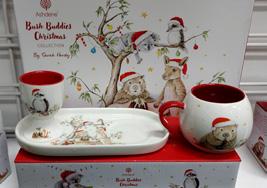








20 per cent on South Sea and Tahitian pearls.
“Everything else on display in-store, including our stunning collection of watches, will be available at a 30 per cent discount,” she says.
“Don’t miss this exceptional opportunity to find the perfect gift or treat yourself to something special.
“We’ve proudly served the Canberra community for over 34 years.
been a trusted presence for the past 27 years.”
Specialising in high-quality repairs, custom ring designs and remakes, Hellen says Advance Jewellers is proud to carry out all work locally in Canberra.
Advance Jewellers, 22 Mawson Place Shop 6A, Southlands Shopping Centre, Mawson. Call 0408 310063 or visit advancejewellers.com.au

Southlands Shopping Centre, Mawson Phone: 0408 310 063



Pre Christmas week: (Timings)
to 5pm – Monday 23rd
10am to 2pm – Tuesday 24th
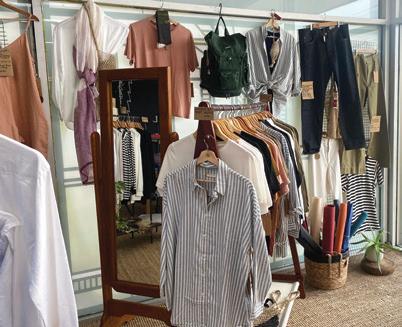



• We deliver truck loads: 8m or 20 bags delivered for $250
•









Here’s a year’s worth of my favourite plants starting with angel wings (Senecio candicans) for summer.
I first saw this plant at one of the amazing show gardens at this year’s Floriade. Its unusual, fat, felt-like silvery leaves were very attractive amongst the soft blues in that garden. I have it in the brightest red pot and it looks striking. I think it will suit any garden.
All senecios love full sun and not much water. Unfortunately, they need to be protected from frost and brought indoors or to a glasshouse for winter.
My best autumn plant this year was staghorn sumac (Rhus typhina). I have planted this tree in my garden purely for its autumnal colour, but so far its spring/summer foliage has been beautiful and contrasting with a dark backdrop.
It’s a small tree that grows to about five metres tall. To keep it in check, it can be cut to the ground every few years to encourage foliage growth.

My best plant for winter would have to be the slow-growing, evergreen shrub, Garrya elliptica, which can reach six metres.
When the catkins are all over the shrub in the depths of winter, it’s telling us that spring is just around the corner.
They are dioecious, meaning they are separate male and female plants. Male plants are showy and can grow to 20 centimetres long catkins and the female catkins are considerably smaller. There’s a dwarf form called Evie that grows only to three metres or James Roof that’s a little bigger. Both are suitable for a suburban backyard and even grown as a hedge under the backyard powerlines
Finally, my best spring plant is cactus. Its main flowering time is around November and, although the flowers might only last a day, the fragrance they bring to the garden is delightful. They are easy to care for, from a windowsill to a whole garden.
MY best tool would be my battery-powered secateurs. They are marketed as effortless, and they are just that. It’s a terrific tool for those who do a lot of work in the garden or if their hand strength is not what it used to be.
MY best book was launched last month called Our Grassy Landscapes.
Written by historian and land carer Jenny Horsfield, it tells the story of how our ecological
landscapes have changed over the years in the Tablelands and the Monaro region, and a celebration of the local people who care for them.
It’s a credit to Jenny’s dedication and love of our local environment, and of all the hard work she has done for the Minders of Tuggeranong Homestead (MOTH) over the past 20 years.
KEEP the vegetable patch growing strong with a good balance of fertilisers and water over the summer months.
Sometimes the sun can burn plants quite easily, so large golf umbrellas or shade cloth thrown over a structure will shade flowers as well.
Long deep watering is beneficial to the roots of plants to help them survive longer in dryer periods. Keep lawns close to the house watered to help cool living spaces.
jackwar@home.netspeed.com.au
• Water in the cool of the day.
• Start to sow winter vegetables to plant out in autumn.
• Liquid feed gardens to keep growth even and healthy.
• Pick stone fruit just at the blush stage and ripen indoors.










Thoughtful quality outshone showbiz pizzazz in this year’s top concerts, exhibitions and plays, says CityNews arts editor HELEN MUSA
Ordinary Days. Q The Locals, at The Q, Queanbeyan, September.
Played against crates depicting the New York skyline with just four characters on stage and Matt Webster on grand piano, the clever lyrics, catchy tunes and daily-life stories of Ordinary Days interwoven to reveal complex individual characters. Joel Horwood, Vanessa Valois, Grant Pegg and
Kelly Roberts, steered by director Chris Zuber, tackled their journey of discovery with pathos and passion.
Shipwreck, by Caroline Huf, part of Abode, at Tuggeranong Arts Centre in April-May and CCAS, Manuka in June. Caroline Huf’s disturbing digital video, Shipwreck, was a telling commentary on
immigration policies worldwide. It explored, through beautifully-staged imagery and wry commentary, the acute plight of a woman cast adrift off the rocky shoreline of King Island amidst jungles of bull kelp as she seeks a place of safety.
Canberra Bach Ensemble. Three Choral Cantatas at St Christopher’s Cathedral, Manuka, May.
The Canberra Bach Ensemble, under its founder Andrew Koll, presented a thrilling concert featuring the three Bach Cantatas that the full ensemble would take to the
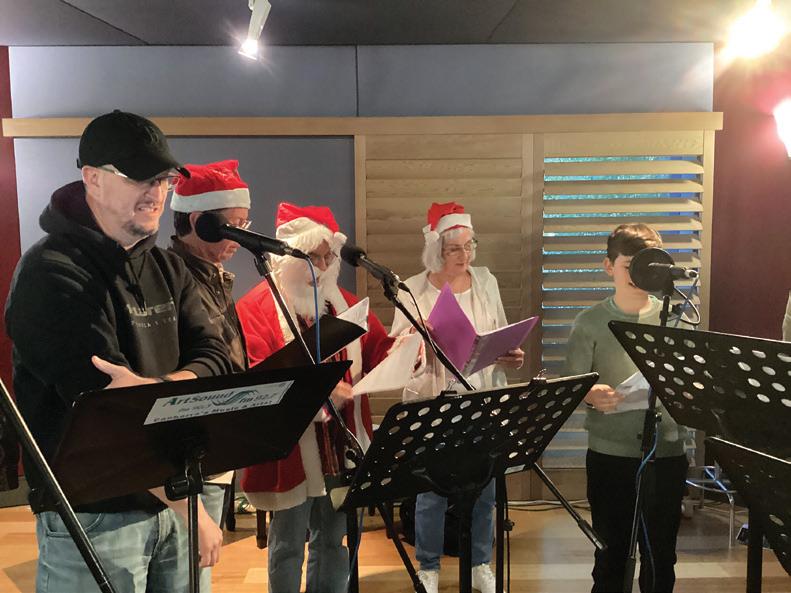
Tempo Theatre’s radio play for this year is Wallaby Bob’s Aussie Christmas. Santa Claus has been kidnapped by evil elves and his daughter Sandy is sent to Australia to find him, with the help of outback hero Bob. Written by Mike Weston and Jo Jones with music by June Colin-Thome, it introduces George Belibassakis as Wallaby Bob and Melita Caulfield as Sandy. Radio 1RPH, 7pm, December 25, then the show will be available in the New Year at tempotheatre.org.au
Australia’s Magna Carta is back on public display at Parliament House after conservation and research. It was purchased in 1952 under the watch of Prime Minister Robert Menzies. The associated exhibition, Conserving the Magna Carta, showcases the scientific research and analysis that has allowed it to return to display on Level 1, Parliament House (adjacent to the cloakroom).
The Canberra Theatre Centre was named Favourite
Tourism Awards in the People’s Choice category.
In more news from Canberra Theatre, a first look at its Schools, Families & Young Audiences season for 2025 has been released, with Gruffalo’s Child, Room on the Broom, The 78-Storey Treehouse, Class Clowns, Act Up and Sea of Light in the line-up.
Opera Australia has announced that pop star and champion swimmer Cody Simpson will make his Australian musical theatre debut alongside an all-star cast in the new production of Guys & Dolls at Handa Opera on Sydney Harbour, March 21-April 20.
Billed as the ultimate summer holidays interactive show, DinoFest Canberra – Age of the Tyrannosaur tells the story of how tyrannosaurs grew from small, dog-sized dinosaurs to become the world’s most fearsome predators over the course of 100 million years. Black Mountain Peninsula near Canberra Aqua Park, Garryowen Drive, January 11-February 2.
Leipzig Bach Festival in Germany during June, a visit which brought lustre to the reputation of Canberra as a city of music.
Seagull, Chaika Theatre, at ACT Hub, April. Partly staged outdoors by a real-life lake and directed by Caitlin Baker, Seagull pitched Joel Horwood as tormented writer Konstantin against Natasha Vickery as the vulnerable actress Nina in a doomed match played out against the vanities of artists and locals in provincial Russia. Close up and personal, Karen Vickery’s new version of Chekhov’s play hit its mark.
Jungle Book Reimagined, Akram Khan Company at Canberra Theatre, February.
English choreographer Akram Khan took Rudyard Kipling’s The Jungle Book into the 21st century to address the climate crisis. Here Mowgli was a little girl adopted by a wolf pack, represented along with other animals by dancers, animations and a soundtrack of voices. The hybrid choreography mixing Western contemporary dance with Indian Kathak movements created moments of terror.


Award-winning Robbie Arnott’s latest novel Dusk is the book of the year for this reviewer.
Set in the highlands of Tasmania in the middle of the 19th century, twins Iris and Floyd, children of notorious convict parents, are low on money and searching for work. They learn that local graziers have placed a bounty on a sheep-killing puma called Dusk, the last of her kind released in the highlands to control feral deer.
Despite the fact that five men have already died, the twins decide to join the hunt, setting off on a quest into unknown territory .
Arnott’s exquisite prose reflects and celebrates the unique and strange beauty of the Tasmanian wilderness.
Elsewhere on my shortlist, in Precipice , Robert Harris retells the story of the tense events, which led to Britain going to war in 1914 and the disastrous decision to expand the war to the Dardanelles in 1915.


At the same time, he reveals the astonishing details of the extraordinary love affair between Britain’s Prime Minister,

letters two or three times a day, insisting on replies. (there were twelve postal deliveries a day in London in 1914).
In all, Asquith wrote 560 letters to Venetia, sharing sensitive information about government decisions.
Harris opens a window on a world rushing to war, while Britain’s Prime Minister is constantly distracted by thoughts of his love for Venetia, writing letters to her even during important meetings of the War Cabinet.
about the Trojan War, Barker’s aim in writing her trilogy is to give a powerful voice to the women who are silent in Homer’s The Iliad and yet suffered rape and slavery.
The Voyage Home reimagines the story of Agamemnon

returning in triumph to Mycenae with his concubine, Cassandra, daughter of Priam.
Cassandra has already had a vision of Agamemnon’s death, like “a stuck pig on a slaughterhouse floor”, because “what he did in Troy was so horrific, so devoid of humanity, that even the gods were sickened”. She
In Mycenae, Clytemnestra waits for her husband to return. She too hates Agamemnon. The two women, his wife and his
The Voyage Home is impressive storytelling. Barker succeeds in reimagining the torment of women whose lives have been
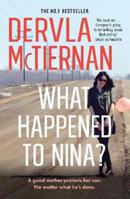
away together for a week of trekking and climbing, staying at Simon’s parents’ holiday house, but only Simon returns.
He tells his parents that, as a result of a quarrel, he had returned home and Nina was going to Boston to visit friends.
When Nina doesn’t make contact, her distraught parents report her missing to police and plead with the Jordans to allow the police to search the grounds of their holiday house.
The wealthy Jordans decide to hire a PR firm, who specialise in reputation manage -
ment, to protect their son from gossip and innuendo.
They start an online campaign against Nina’s parents, to distract media attention away from Simon.
The consequences of their actions lead to a shocking resolution.
Since 2007, using the pseudonym Benjamin Black, Booker Prize winner John Banville has written crime novels about an alcoholic pathologist, Quirke, set in 1950’s Dublin.

In 2020, Banville published Snow under his own name, introducing a new detective, Inspector St John Strafford from the protestant land-owning class. In April in Spain (2021) he brought Strafford and Quirke together.
The Drowned, the fourth in the series begins in rural Wicklow with an expensive car in a field, the engine running and the doors open. A desperate man, emerging from the darkness, claims his wife has drowned herself.
An extensive search on both sea and land finds no sign of the woman. Strafford is sent south to investigate, discovering to his surprise that he knows two of the men involved; Charles Ruddock with whom he was at school and Professor Armitage, whom he interviewed when investigating the death of Rosa Jacobs (The Lock-up, 2023). Infused with melancholy, The Drowned is a lyrical exploration of both doomed and toxic relationships.

Craig Brown, the award-winning and best-selling author of One Two Three Four on the Beatles and Ma’am Darling on Princess Margaret, now turns his attention to Queen Elizabeth II in A Voyage Around the Queen (Fourth Estate, $37.99).
finding Donald Trump “very rude”, to Labour minister Tony Benn’s failing to remove the Queen’s head from postage stamps, to her terrifying guests, such as Marilyn Monroe and Kingsley Amis, the latter so frightened of personal defecation that he took “a firewall of imodium”. And, of course, there is a chapter on the corgis, whose ferocity Brown “compares to the Corleone family”. A wonderfully readable book that both republicans and royalists will enjoy.
complex public, and often very private life, of James Fairfax, within Australian politics, society and culture.
The 11 artefacts include a long-case clock built by Fairfax’s grandfather and given to his parents as a wedding gift, now housed in the National Trust Retford Park estate; a Henry Moore silkscreen; a Rubens painting; a Robert Klippel sculpture and a large satirical mural painted by Donald Friend. Gilly explores privilege amidst difficult family relationships, within an imploding newspaper empire. A revealing and empathetic book.
she was the granddaughter of Charmian Clift confirms her genetic communication skills, to which those who attended Chick’s event at the Street Theatre in September will testify.
Brown creates a fascinating biographical mosaic of the Queen in 112 short chapters, constructed from memoirs, diaries, essays, cultural history, travelogues and imagined events. Brown’s original approach sheds remarkable light on the most public yet most private of sovereigns. Brown sees Elizabeth as “a kind of anchor to people . . . She inhabited the psyche of a nation”. The nearly 650 pages contain hundreds of vignettes ranging from the Queen

James Fairfax (1933-2017), one of Australia’s greatest philanthropists and art collectors, was a director on the Fairfax publishing company board (1957-1987) and chairman (19771987). In the sumptuously produced

James Fairfax: Portrait of a Collector in Eleven Objects (New South, $49.99), Fairfax’s nephew Alexander Gilly spins off 11 objects and private letters to document the
Gina Chick, the inaugural winner of SBS series Alone Australia, delivers a frank and moving autobiography in We Are the Stars (Simon & Schuster, $36.99 ), which follows Gina from a decidedly unconventional childhood, to troubled times in Sydney in her 20s and living “wild” in her 30s. Chick documents her battle with breast cancer and the loss of her three-year-old daughter, but the book is ultimately life-affirming, with Gina ultimately finding love, particularly in nature. The discovery that

My Life in Music by Antonio Pappano (Faber $49.99) sees Pappano, the music director of London’s Royal Opera House (2002 -2024), engagingly tell how a boy, born in Epping in 1959 to parents who had emigrated from rural Italy, became a renowned figure in music, culminating in his conducting the music at the Coronation of King Charles. Pappano’s descriptions of his early life and travels are revealing before describing a stunning musical career scale in America, Europe and Britain. His love of music shines through. He denies that classical music and opera are elitist: “You can be called an elite athlete and that’s great, but in the classical world if you are ‘elite’ you are seen as an effete toff.” He attacks the Conservative politicians in Britain who cut arts funding: “I wish politicians would be open to what’s going on in the arts… Theatre, opera, concerts are brain-openers as well as heart-openers”. Hear hear.


Richie Benaud’s Blue Suede Shoes, by renowned British historian David Kynaston and critic Harry Ricketts (Bloomsbury, $44.95) is a compelling account of sporting and social history seen through the prism of the fourth Test match between England and Australia at Old Trafford in July 1961. They follow the changing fortunes of a dramatic Test match, which decided the Ashes, through key players, notably the respective captains: England’s reserved public school establishment figure Peter May and the ebullient, former Sydney crime-beat journalist.
Richie Benaud, who checked the Old Trafford pitch wearing blue suede shoes. Australia famously won the match with an inspired spell of Benaud spin bowling, England losing nine wickets for 51, including Benaud bowling May for a duck. This match hastened the fall of the “Gentlemen” and “Players” codes, a sort of cricketing social apartheid.
Richie Benaud’s Blue Suede Shoes brilliantly recounts one dramatic game of cricketing history against the changing social structure of Britain in the 1960s.





Packed with prestige drama and cracking comedies, 2024 has been one of the most bingeworthy years of streaming in recent memory.
So many shows, so little time, so here are some of the best of the year.
Honourable mentions go to Landman, The Day of The Jackal, Industry, The Tattooist of Auschwitz, Tokyo Vice, Shrinking, The Gentlemen, Ripley, Black Doves and Kaos.

5. One Day –Netflix Romantic comedies served up on Netflix often
induce little more than eye-rolling but One Day broke the mould with a story that was genuine, funny and tragic. Held together by its two charismatic leads Leo Woodall and Ambika Mod, this series told their broken love story by showing one day of their lives every year over 14 episodes. The conceit worked like a charm.
One Day won hearts around the world then proceeded to break them.
4. The Penguin – Binge
When this spin-off to the Robert Pattinson Batman movie dropped in September I thought it was a case of another hollow cash grab and called it as much in a column at the time.
But as the series went on I realised I would have to eat my words.


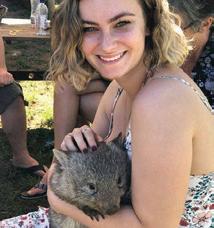
Despite the comical choice of Batman villain it’s based on, The Penguin revealed itself as a gritty, emotional crime drama that channelled inspiration from TV greats such as The Sopranos.
Colin Farrell sinks totally into this gangster trying to climb Gotham City’s criminal ladder and makes the character hard to look away from. This is a step above your standard comic book-inspired affair and will even appeal to those who are otherwise uninterested in the caped crusader.
3. The Bear – Disney Plus
Much like the chefs at the centre of this culinary comedy-drama, season three of The Bear got even more experimental.
This series about a grief-stricken cook on a mission to transform his late brother’s restaurant into a dining icon continues to turn up the heat with each new season. The show is constantly evolving and the amount of story and character development it packs into its roughly 20-minute episodes










makes for cracking TV. Its constantly frenetic editing, music and script also keep things fresh. Season four is already on the way but The Bear is far from being overcooked.
2. Baby Reindeer – Netflix
Arguably the most talked-about show of the year and for good reason. Baby Reindeer was a breakout success for creator and writer Richard Gadd, who bravely put the strange, true story of a woman who relentlessly stalked him out there for the world to see.
What started as a comedy became darker as it went on, turning into a raw psychological exploration of abuse, addiction and identity.
And yet Gadd, a stand-up comedian, always managed to keep this heavy experience afloat with his oddball sense of humour.
The controversy and conversations that swarmed around this show only catapulted it to greater fame.
The woman who stalked Gadd is now trying to sue him and Netflix for around $250 million. When that hit the headlines, it
once again put Reindeer in the spotlight and something tells me we haven’t seen the end of this intriguing saga yet.
Baby Reindeer did perfectly what any good TV show should – got people talking.
1. Shogun – Disney Plus
Sweeping the Emmys with 18 wins, this epic, historical blockbuster about feudal Japan has cemented itself in TV history.
Telling a violent tale of warring factions in 1600, Shogun felt reminiscent of Game of Thrones in its ambition, full to the brim with competing, back-stabbing characters each as fascinating or dislikable as the last.
The arrival of a mysterious European ship at a fishing village is what lights the fuse for the conflict that unfolds.
Perhaps what’s most exciting about the series is just how high it’s raised the bar for streaming spectacle. From the very first minute, the awe-inspiring cinematography of the show was on full display.
Shogun is television on a whole new scale.




Black Salt’s burrata… firmer on the outside and soft on the inside, it
a drizzle of an aged-balsamic reduction.


‘It’s been a whirlwind of a year for hospitality, says dining reviewer WENDY JOHNSON.
Restaurants and cafes opening. Restaurants and cafes closing.
Family businesses giving it a go. Big guns from interstate entering the capital’s dining scene. It’s been a whirlwind year.
As always, my year of dining ends with my top five picks. Here they are (alphabetical order)…
If you’re passionate about Greek food, do not go past Alia Bar (Civic). Dishes are
delish, stunning looking and priced right. Wines are too. Skilfully created was the oxtail with a masterpiece red wine sauce. Octopus lovers will embrace the Xtapodi with oregano and lemon. The baklava cheesecake was heavenly. Close your eyes and, bingo, you’re in Greece.
Ballyhoo is lively, fun and fiery. One of three dining places on The Lawns of the Lobby, Ballyhoo celebrates the intense flavours of the Mediterranean and South

America. An exceptional starter is a sensationally smooth taramasalata with a petite mound of sexy smoked salmon caviar on top. Wood-smoked dishes are worth every bite. Prawns are succulent. Service is with a smile.
Beltana Farmhouse, set in a picturesque truffle orchard in Pialligo, offers a farm-food journey including a succulent half-roasted chicken with a special stuffing, saltbush and tarragon jus. Just as amazing is the moist Nduja swordfish, smoked lamp rump and a simple but satisfying salad of farm leaves with a verjuice vinaigrette. Rustic charm at its best.
One of my first reviews in 2024 was Black
BEST OF EVERYTHING / dining
Salt (Kingstone Foreshore), a hard-working family operation with staff who truly care (nothing is too hard). Views of the lake can be enjoyed from inside and outside. The burrata is a signature dish, as is the Frito Misto and chicken roulade. Wines are not expensive.
I stumbled across Flui (Melbourne Building, Civic) when they had only been open a couple of days. Originally called Flow, this cool, laid-back restaurant smashes it with extra jumbo king prawns (U6 grade), perfectly chargrilled. They packed a punch with fermented chilli and citrus. Mussels are equally impressive.
Rakkas nailed it on my first visit with modern Turkish food. Dips are divine
including silky, smooth hummus featuring a swirl of black tahini and crunchy chickpeas on top. The slow-cooked lamb shoulder can be cut with a fork. Cocktails are creative and desserts decadent. I’ve been back a couple of times and note that Rakkas needs to keep its finger on service. It was unaccommodating when last I dined there. Shall try once more since the food is excellent and decide then if it remains on my 2025 radar. Special mentions include laid-back Rosa’s , with appealing pizzas, Amara Indian with their amazing dosai (house specialty) and goat on the bone, and Kivotos Wine Bar with their lemon potatoes and Moussaka paddle pops.
When the editor suggested the theme of “six of the best” I must say I was triggered, as this phrase can mean a beating with a stick or cane.
New Zealand, where I was schooled, became the first English-speaking country to make corporal punishment of a child illegal.
That happened in 2007, so a considerable period after my school days; they don’t use corporal punishment any more, it’s old school.
For the 25th anniversary of the high school I attended, they published an extract from the caning register providing an insight into why punishment had been extracted: the most frequent reason given for a caning was “impudence”. This is a highly subjective matter as it encapsulates the quality of being rude and not showing respect, especially towards someone who is older or, importantly for a schoolboy, in a more important position. Disagreement on some matters was, in the 1960s, sometimes considered impudent and I resembled that remark.

local wines (in no particular order):
Hopefully, with the necessary amount of respect to avoid impudence, I now offer my recommendations for holiday season drinking. Don’t beat me up that they are all
1. Nick O’Leary Riesling 2024 . This wine won a swag of awards at the 2024 Canberra and Region Wine Show including Best Wine of Show. This citrus flavoured delight is available from the winery at $28 a bottle and is a wine of fine balance given its youth. It would be good to sit in the shade away from
the seasonal heat sipping this wine and nibbling on prawns.
2. Mount Majura Vineyard 2022 The Silurian Sparkling . This sparkling wine is good for the Christmas/New Year toasts. The name refers to the geological age of the rock from which the vineyard’s soils are derived. The Silurian is made in the traditional
method from the varieties chardonnay and pinot noir. Reasonable value at $38 a bottle from the winery, this is a bright, pleasant wine that gives a mild brioche and green apple finish.
Tiger, Tiger Chardonnay 2022 . I have a bottle of the 2019 in my wine fridge, which I bought after tasting a glass of this vintage some time ago at The Boat House. The 2022 is available from one retailer at circa $37 a bottle, good value. This is a powerful chardonnay that will cellar well. But for immediate drinking it would match with roast chicken or other poultry. It’s a complex wine with fine acidity and a lemony, spicy mid-palate. It finishes cleanly and makes a great food wine.
Ravensworth 2022 Hilltops Nebbiolo. At $45 a bottle from the winery, this lovely Italian red varietal beats out some of the mother country wines on price and equals them on quality. Sleek and savoury, this wine matches with roasted quail or rare fillet steak. It has an abundance of red fruit and is awash with ripe tannins.
5. Clonakilla Shiraz Viognier 2023. This is a present for someone special at $128 from the winery, the classic blend of shiraz and the unlikely white viognier. In his somewhat hyperbolic manner, Nick Ryan, of The Australian, described this wine as moving “through the mouth like unfurling silk and finishes with a plume of finely pixelated tannins”. It’s a classic of the region and one that will bring the gift giver acclaim.
6. The Vintner’s Daughter 2021 Fortified Shiraz . This would be the wine to have with your Christmas pudding. It’s $70 a bottle, but opulent and richly flavoured from grapes that have been left to partly shrivel and raisin on the vine. The spirit is neutral and the sweetness of the fruit is not overshadowed by its addition. It has vanilla overtones and is mouth filling.
I have no problem with capital punishment in theory, just in execution. – Anon


By Joanne Madeline Moore
ARIES (Mar 21 – Apr 20)
You’re in the mood for plenty of fun and festive cheer. However, with your ruler Mars in retrograde mode (and Saturn squaring Jupiter), too much haste could land you in trouble, especially involving family, friends and/or neighbours. So do your best to get the balance right between thinking things through and being spontaneous. When it comes to Christmas presents, choose ones that bring joy and inspiration, like soulful music and beautiful books.
TAURUS (Apr 21 – May 21)
With Mars reversing through your domestic zone, you’ll feel like cleaning, decluttering, and rearranging your living space or tackling a delayed DIY project during the holiday season. But Uranus squares Venus (your ruling planet), so Bulls can expect a busy and bamboozling week. Prepare for some very short timelines. You don’t work well when other people try to hurry you. Have the confidence to cruise at your own preferred pace this Christmas.
GEMINI (May 22 – June 21)
You’ll need to be extra diplomatic if you want to avoid a fraction too much friction on Christmas Day. With Mars reversing through your communication zone (and Saturn squaring your ruler Mercury), misunderstandings are likely, so tread carefully. Jupiter is jumping through Gemini, so focus on friendship, generosity and community spirit. Your motto for the week comes from writer (and birthday great) Henry Miller: “Do anything, but let it produce joy.”
CANCER (June 22 – July 23)
Prepare to be in a fabulously festive mood, as you let your hair down and enjoy the Yuletide celebrations to the max. But if you eat and drink and party too much on Christmas Day, then you’ll be a grumpy Crab for the rest of the week. And with Mars reversing through your money zone (until February 24) be careful at the Boxing Day/New Year Sales. Extravagant, impulse buys (especially on Saturday) could result in long regrets later on.
LEO (July 24 – Aug 23)
Most Leos love to live large and enjoy life’s little (and big) luxuries. This week, with Mars reversing through your sign, there’s a tendency for you to overdo things even more than usual – like buying extravagant presents, overdressing, overeating and over-drinking. So, some Lions will have trouble getting started on Boxing Day, as your body reacts to all the rich treats and alcoholic beverages you enthusiastically over-consumed on Christmas Day!
VIRGO (Aug 24 – Sept 23)
This week Mercury (your patron planet) opposes Jupiter and squares Saturn, so you may feel a bit out of sorts this Christmas. Many Virgos have a very delicate digestive system which is easily upset by stress, rich food, too much alcohol, overwork and over-excitement. If you pace yourself, then you (and your sensitive stomach) will enjoy the festive season even more. Simple meals – in small amounts – and plenty of sleep is the smart and sensible way to go.
LIBRA (Sept 24 – Oct 23)
Mighty Mars is moving backwards, so don’t worry if your carefully-made plans are messed up this Christmas. Try to keep things in perspective. It’s OK if the food, presents, decorations and celebrations aren’t 100% perfect. As birthday great Quentin Crisp wisely observed: “Treat all disasters as if they were trivialities, but never treat a triviality as if it were a disaster.” Aim to enjoy the festive season with your favourite family members and/or close friends.
SCORPIO (Oct 24 – Nov 22)
With Venus and Pluto (your ruler) in your domestic zone on Xmas Day, many Scorpios will host festive celebrations at home. But communication between guests looks tricky, as argumentative retrograde Mars stirs up sensitivities. It will take your very best diplomatic (and acting) skills to keep children under control, parents from getting paranoid, and family members from feuding. When in doubt, take ten deep breaths and continue… the show must go on!
SAGITTARIUS (Nov 23 – Dec 21)
Saturn (in your domestic zone) favours traditional Christmas celebrations, surrounded by family and/or friends. Choose your words wisely as Saturn squares (and Mercury opposes) your ruler Jupiter. If you’re not careful, you could blurt out the wrong thing to the wrong person at the wrong time and upset a relative or stir up an old family grievance. Smart Sagittarians will simmer down, hold your tongue, and think things through before you speak.
CAPRICORN (Dec 22 – Jan 20)
When it comes to last-minute gift shopping, look for presents that are practical and useful. But if you spend more than you can comfortably afford this Xmas, then you’ll just end up with a heap of New Year debt. You don’t have to go overboard in order to have a good time. And avoid getting too serious and stressed. It’s time for clever Capricorns to bliss out on Yuletide cheer! A calm and methodical approach is the best way to handle festive celebrations.
AQUARIUS (Jan 21 – Feb 19)
Unique Uranus and joyful Jupiter are transiting through your family-and-friends zone so strive to be more generous towards loved ones, as you view a troubled relationship from a more philosophical perspective. Your Christmas motto is from birthday great, singer-songwriter-activist Annie Lennox: “Make kindness your daily modus operandi and change your world.” With Venus visiting your sign, this week is all about socialising with loved ones and having fun.
PISCES (Feb 20 – Mar 20)
Steady Saturn helps to stabilise and conserve your energy throughout a long and hectic Christmas Day. Then you’ll be able to enjoy the Yuletide celebrations … without feeling totally exhausted by bedtime! Many Pisceans will spend the postChristmas period at home, as you reflect on 2024 and look ahead to 2025. So, your motto for the week is from birthday great, writer Henry Miller: “One’s destination is never a place but rather a new way of looking at things.”
Copyright Joanne Madeline Moore 2024

3 What, in the US, are law enforcement officers called? (8)
7 Name a soft, subdued shade. (6)
8 What is lack of appetite? (8)
9 Name a tube through which liquid flows. (6)
10 To pay out money, is to do what? (8)
11 What is a faultfinder known as? (6)
14 To have declared definitely, is to have done what? (6)
17 Which term describes that which is open to dispute? (8)
18 That which is devoid of lard could be termed what? (6)
19 To be furnished with crossed strips, is to be what? (8)
20 Name an alternative term for builds. (6)
21 What do we call a person who tells a story? (8)
1 What is the diameter of a bullet known as? (7)
2 What do we call those who engrave metals, etc? (7)
3 Which term describes defamation? (7)
4 Melted cheese, sometimes mixed with beer, etc, is known as Welsh what? (7)
5 Name a ballroom dance in 4/4 time. (7)
6 What is marine algae known as? (7)
11 Name a British comedian, film actor and director, Charlie ... (7)
12 What might we call one who denies or nullifies? (7)
13 Name a simple musical wind instrument shaped somewhat like an elongated egg. (7)
14 Name an Australian lawyer and diplomat, Sir Percy ... (7)
15 What do we call one who exacts satisfaction? (7)
16 Which term describes those who deviate from the regular courses? (7)
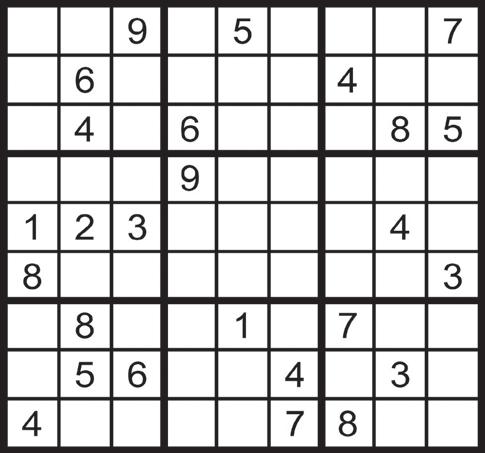


As we face the New Year, why not use your time away from work to make some financial resolutions for 2025.
I've compiled seven important suggestions to get you started.
1. Make a personal budget of your income and expenses and for your business. It can be even more powerful if you make it a cash flow statement setting it out month-by-month to pinpoint the difficult months. Using the month-by-month method also takes seasonal variations into account.
2. Make a plan to pay off your personal, non-tax-deductible debt. This is even more important now that interest rates have increased. Setting up an offset account with regular savings works really well for non-tax deductible debt. An offset account may not be so sensible for tax deductible debt. Before you make these decisions speak to your accountant or financial adviser.
3. Search out lower interest rates for all your debt including your home mortgage. While this may require a fair bit of work and may seem too difficult, it is worth it in the long run. You may even find that if you ask your existing lender that they will agree to give you a lower rate.
4. Update your will and set up an enduring power of attorney if you do not have one. If your will was written 30 years ago now is the time to bring it up to date. I recommend that you take the time and spend the money to use a specialist wills lawyer. Then you can be confident that your estate is dealt with in accordance with your wishes. I have seen many people write their own wills and then their heirs discover that the DIY version didn’t meet the needs of the deceased.
5. Check your binding nomination with your superannuation fund. Your superannuation is not dealt with by the executor of your estate after your death. It is dealt with by the superannuation fund trustees who may never have met you and have no idea of your objectives. I see this often so I cannot emphasise enough how important this is.
6. While we are talking about superannuation, if your superannuation balance is less than $500,000 you may have some catch-up concessional contributions available to you. If you have any attributed to the 2020 financial year these will lapse on July 1 2025 if you have not used them up. Make an appointment to get some advice and then you can claim them as a tax deduction in 2025. By way of example, if you contribute $10,000 to your fund and you earn more than $135,000 you will save tax of $2400 and you will receive an additional refund of about $3900 when you lodge your tax return
7. With these plans in place you should be able to save some money. Make a savings plan so you have an emergency fund. None of us are immune from financial surprises, the car needing repair, the excess required after storm damage, a broken tooth or your fur baby needing unexpected treatment. That emergency fund will prove very useful.
The experts at Gail Freeman & Co Pty Ltd thank you for your support in 2024 and take this opportunity to wish you compliments of the season. We are taking a break and will be back in early January. If you want a budget or monthly cash flow template please contact info@gailfreeman.com.au or call 02 6295 2844.
Disclaimer
This column contains general advice, please do not rely on it. If you require specific advice on this topic please contact Gail Freeman or your professional adviser. Authorised Representative of Lifespan Financial Planning Pty Ltd AFS Lic No. 229892.







Winnunga Nimmityjah AHCS is an Aboriginal community controlled primary health care service operated by the Aboriginal community of the ACT.
In Wiradjuri language, Winnunga Nimmityjah means Strong Health. The service logo is the Corroboree Frog which is significant to Aboriginal people in the ACT.
Our aim is to provide a culturally safe, holistic health care service for the Aboriginal and Torres Strait Islander people of the ACT and surrounding regions. The holistic health care provided by Winnunga AHCS includes not only medical care, but a range of programs to promote good health and healthy lifestyles.
Our services include:
• GP and Nursing
• Midwifery
• Immunisations
• Health Checks
• Men’s & Women’s Health
• Hearing Health
• Dental
• Physiotherapy
• Podiatry
• Dietician (Nutrition)
• Counselling
• Diabetes Clinic
• Quit Smoking Services / No More Boondah
• Needle Syringe Program
• Mental Health Support
• Healthy Weight Program
• Healthy Cooking Group
• Mums and Bubs Group / Child Health
• Optometry Service
• Psychology and Psychiatrist
• Community Events
• Groups

Winnunga AHCS is a national leader in accreditation, was one of the first Aboriginal community controlled health services to achieve dual accreditation under RACGP and QIC standards. Winnunga AHCS has been at the forefront of setting a national agenda for quality improvement in Aboriginal community controlled health and continues to advocate locally and nationally for best practice standards in operational and governance areas of Aboriginal health services.
CLINIC hours | MONDAY TO FRIDAY 9am-5pm
Ph: 6284 6222 | 63 Boolimba Cres, Narrabundah www.winnunga.org.au

